Warm Weather Walking
by Nigel Williams
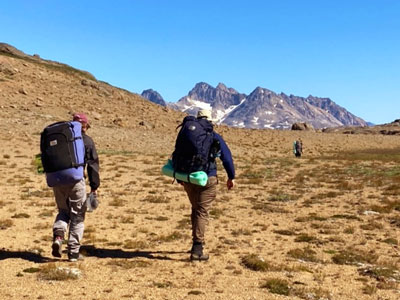
Avoiding heat stroke by keeping well hydrated is the number one priority for walking in the heat, stopping regularly in the shade or an exposed place with a breeze if possible. Regulate clothing immediately when needed rather than delaying to some significant point on the journey. Among the Munros, I have drunk clean water straight off the hill without a worry for 40 years with no ill effects, so I often carry very little with me, bearing in mind that a litre weighs 1 kilogram. I enjoy a cup of tea and, with modern gas cookers like the MSR reactor or a Jetboil, I can have a half litre mug of tea within 3 or 4 minutes of stopping, which forces me to rest and cool down for longer.
Heat stroke is a much more serious issue than hypothermia. Generally, with hypothermia, cold and wet patients can be rewarmed without lasting consequences. It is easier to warm someone with additional clothing, shelter, companion body heat and, perhaps, activity, especially if it involves moving early downhill to safety in the early stages of the situation. With heat stroke there is a high risk of serious life changing damage to vital organs. It is almost impossible to cool someone down without access to water, and further movement to a sufficient water source to rapidly cool the body is likely to exacerbate the problem.
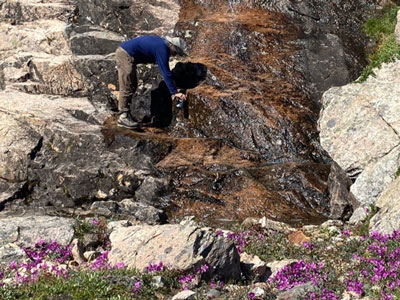
So far this summer I have been out leading/supervising groups in a variety of areas in hot weather; the low hills around Glen Dye, just south of Banchory, Helvellyn in the Lakes, and a 5 day trek in East Greenland with the Polar Academy. On each occasion, the availability of water was a key concern largely overlooked by the participants. It is linked to planning and navigation, as well as an understanding of the impact extended hot weather has on hydrology, the environment and decision making.
Plan ahead for water stops
Each of those walks involved the group ascending to high ground and along ridge features with little prospect of water. In each case, the group needed to study the map to see where the last likely source of water would be, and estimate the distance and time before they would descend to a likely drinkable source of water. In one case, following some days of warm weather the group passed what was a significant stream on the map about 400m before the smaller stream which they had identified as the last water supply for a couple of hours. The fact this penultimate stream had very little water in didn't ring alarm bells. They reached the final stream, which turned out to be dry, and it took some persuading to get a few people to go back to resupply the group. The group also overlooked the fact that the first stream they would cross on the other side of the high ground was in a farm and might not be good drinking water without purification or boiling. There was water 300m off the path higher up, but leaving the path seemed too much effort. All understandable decision- making based on their limited experience at the time, but could lead to a spiral of unforeseen consequences.
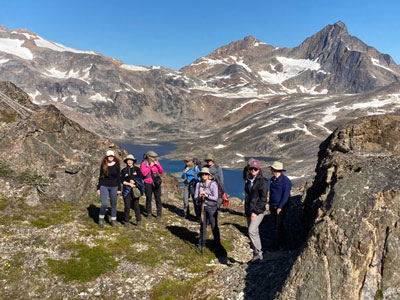
CamelBak drinking bladders with tubes make it difficult to tell how much has been drunk and what is left. The bags are a faff to extract from the rucksack and fill, so it is easy to be lazy about refilling. Another issue is that some people do not like to wee outdoors and so avoid drinking, which can go unnoticed; this can be a serious issue, particularly with young people, and on multi day trips.
Sun protection
In the military, sunburn is deemed to be a "self-inflicted wound". High in the hills the atmosphere is less polluted and the effects of the sun are stronger. We are perhaps more aware of the potential risks of sunburn these days; gone are the days of slapping on "sun tan lotion" as opposed to "sunscreen". SPF factor 50 is the best option. The NHS sunscreen and sun safety guide is a really useful document.
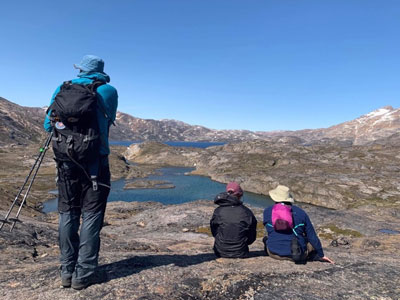
Wear light clothing in pale/pastel colours which are likely to reflect the light rather than absorb it. White is best but yellow, grey, pink etc are good. Avoid black as it absorbs the heat and experiments have shown a considerable temperature range between black and white materials. A super light Pertex windproof top is great if there is a breeze and can help cover exposed skin. I use a light peaked cap or a wide brimmed sun hat with a flap of material to cover the back of the neck. Sunburn on the back of the neck and ears is common, especially if carrying a heavy rucksack, which tends to make one look down. Soaking hats in a stream from time to time during the day has a great cooling effect.
In early spring, if there is a lot of snow, or one is around water, sun glasses are essential; gritty eyes at the end of the day is mild sunburn of the retina and may last a couple of days. Although rare in the UK, with prolonged exposure this can become snow-blindness, which is extremely painful and completely debilitating for a few days, as you can't open your eyes.
Food
Cereal bars and sandwiches are good food but perhaps avoid meat, or anything that might become less appetising in the heat. Chocolate bars can become a molten mess, although a few minutes submerged in a stream can rectify that.
Lastly, think about avoiding the heat altogether
In midsummer, or in more northern latitudes towards the Arctic, do consider walking through the cool of the night and laying up during the heat of the day. It is a wonderfully uplifting experience and you might even see the northern lights.
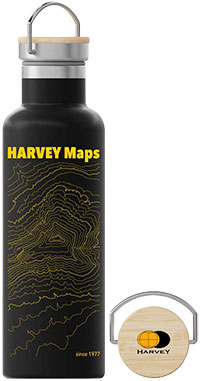
- Kep yourself cool on your hike with the HARVEY Thermabottle - available in Large (750ml) and Small (500ml). Perfect for keeping drinks hot or cold when out on the hill!
Return to the Navigation Blog
 FREE UK delivery
FREE UK delivery For Christmas delivery information
For Christmas delivery information 







